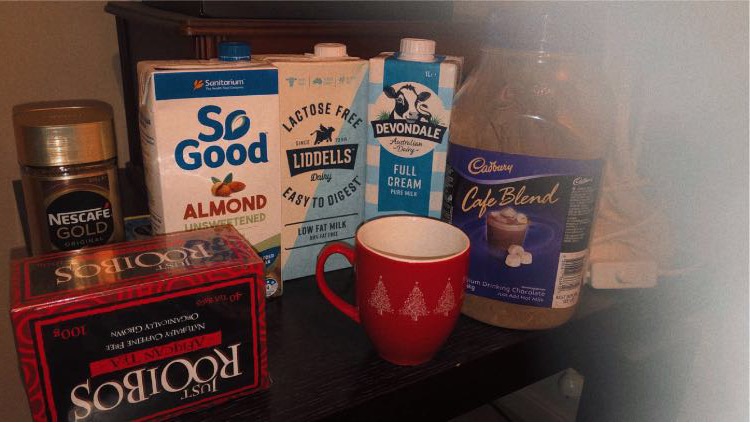People consider milk to be a staple of a healthy diet. It’s commonly used in food manufacturing. For many Australians, it’s an essential addition to cereals and beloved beverages like tea, coffee, and hot chocolates. So, how do dairy and non-dairy milks compare in terms of sustainability? Erin Visagie reports.
According to several recent studies, cow’s milk contributes more to environmental degradation than plant-based milk.
There is little argument, plant-based/alternative milk sources are better for the planet and our health than cow’s milk, but every milk type has specific qualities which enhance our health and our planet.
The world average for generated GWPs (Global Warming Potentials) for cow’s milk is 262. Australia and NZ have a 10 GWP rating, in comparison to Europe’s 175 GWPs.
Plant-based milks like almond and soy, only had a combined score of a 12 GWP, compared to dairy milk.
Evidence suggests the geographic location has an impact on the GWP for dairy, as shown below.
Untitled Visualisation
Beautiful, easy data visualization and storytelling
Cows milk emits three times more greenhouse gases than any plant-based milk.
A 2018 Oxford study found cow’s milk contributes 3.2 kilograms of greenhouse/carbon emissions, with rice milk coming in second place at only 1.2 kilograms.
The lowest level of carbon emissions was 0.7 by almond milk.
Carbon/Greenhouse gas emissions per each milk
This table is based on research done by Oxford scholars Poore and Nemecek, in a study called ‘Reducing food’s environmental impacts through producers and consumers’ published in 2018. The study found that cows milk contributed 3.2 kgs of carbon dioxide, followed closely by rice milk, which contributed 1.2 kgs.
There is a relationship between milk production, climate change and water intake. On average, dairy farming uses 628 litres of water per litre of dairy milk, compared to 371 litres for almond milk, 210 for rice, 48 for oat, and 28 for soy.
Water use- comparisions of plant based and cow’s milk
No Description
The dairy industry uses the highest level of square metres of land per litre, with dairy using 8.9 square metres, compared to 0.8 for oat, 0.7 for soy, 0.5 for almond and 0.3 for rice milk.
Land use- comparisions of plant based and cow’s milk
No Description
So why is cows’ milk harmful to the environment? Dairy cows and manure production have a considerable impact on climate change, according to research by World Wildlife.
Several factors lead to cow’s milk being the largest influence on the environment. These factors include: “poor manure and fertiliser handling”.
World Wildlife research reports how dairy farming produces methane, nitrous oxide, and carbon dioxide through feeding, digestion, and manure management.
Dairy farming uses large amounts of water for growing feed, processing products, and for cows’ daily water consumption.
The organisation maintains the main threat stems from manure/fertiliser contaminating water sources and producing algae in local waters which kill plants and animals.
Business Insider reports “animal agriculture is a key factor in land degradation, deforestation, water stress, pollution and loss of biodiversity”.
The general consensus suggests it may be beneficial to consider introducing organic versions of plant-based milks to minimise the carbon footprint of milk production and consumption.
From a nutrition standpoint, non-dairy milks, and dairy milk products each have pros and cons.
Dairy milk has numerous health benefits, such as high protein and calcium content.
Conversely, non-dairy milk contains more vitamins and minerals, including Vitamin E, B, B12 and D.
Sugar, fat, and calorie content also differ.
The choice of milk depends on personal preferences and informed decisions.
Which milk do you prefer?
What type of milk is your favourite?
Poll Answers: Dairy milk, Rice milk, Oat milk, coconut milk, almond milk, other nut milks, soy milk, A2 milk, low fat milk, other milks, I don’t like milk., hemp milk,
By Erin Visagie
….
SOURCES:
https://blog.datawrapper.de/cow-milk-and-vegan-milk-alternatives
https://www.worldwildlife.org/industries/dairy
businessinsider.com.au/there-are-a-lot-more-problems-with-the-dairy-industry-than-the-price-of-milk-2016-5
https://www.healthline.com/nutrition/healthiest-milk#3.-Almond-milk
https://www.camelmilkco.com.au/index.php/blog/18-what-are-the-best-5-healthiest-milk-alternatives
https://www.medicalnewstoday.com/articles/325425







